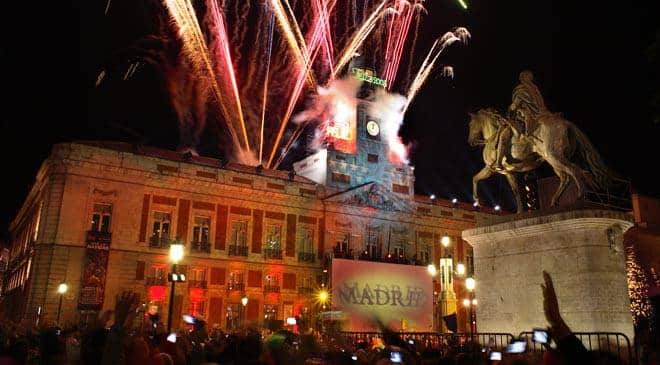
04 Dec Christmas in Spain: Just Explore top tips on how to celebrate a traditional Spanish festive season
And just like that, Christmas in Spain is nigh. That time of year to cut yourself a nice slice of Italian panettone and start gauging out the best place to buy the perfectly plump turkey for Christmas day. Although, Spain has some of its own beautiful traditions that deserve pointing out, and even better, experiencing. Southern Spain especially is known across the globe for its parties all-year-round, so why should Christmas be any different? From one of the best Christmas lights displays in the world to touching church vigils and passionate street processions, Andalusia shines brightest during this time of year.
We create tailor-made itineraries for families who happen to be in Spain during Christmas, and some are fortunate to visit locations where many of these Christmas traditions originated from such as the vibrant city of Malaga, or Andalusia’s culturally rich Golden Triangle – Granada, Cordoba and Seville – which set up some of the most beautiful nativity sets you’ll see anywhere in the world. There are also the smaller towns of Carmona and Ronda, immaculate any time of the year but especially at Christmas with their ancient buildings and cobble-stoned streets decked with lights and decorations, and the sweet scent of melting chocolate wafting out of quaint shop windows into busy town squares. Experience the magic of Christmas in Andalusia.
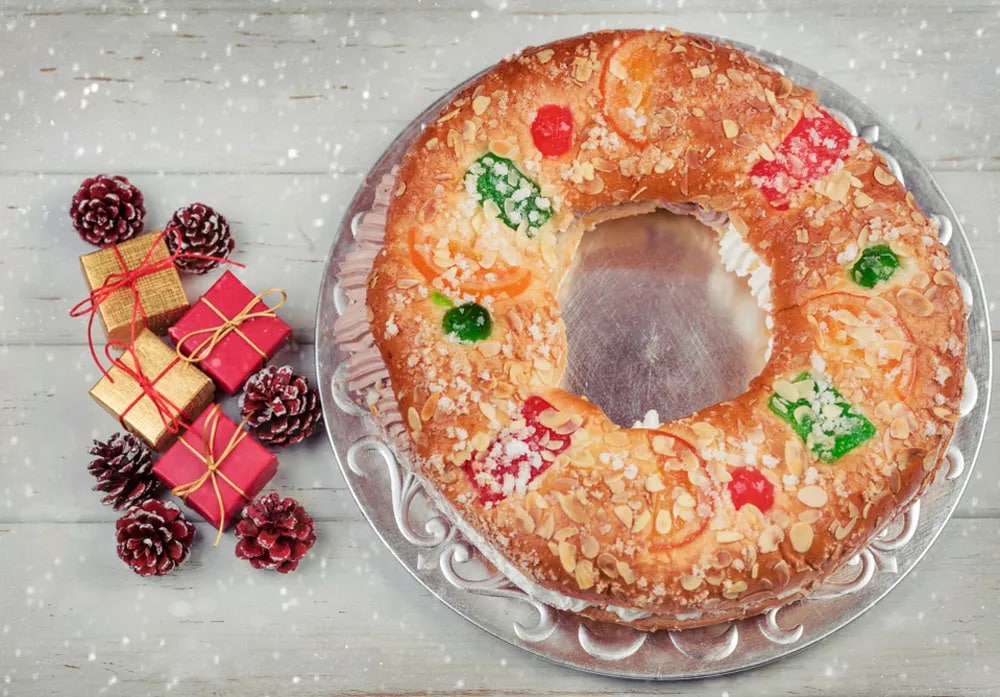
7 Tips for Celebrating Christmas in Spain
Spanish Christmas nativity sets
This tradition in Spain comes from Saint Francis of Assisi. It was Christmas eve 1223 in the Italian town of Greccio where Saint Francis of Assisi organised the first nativity set. But it was not of figures, real people were used, as well as a live donkey and mule. This representation of the nativity scene became a tradition among the Fransicans and Poor Clares and then spread all over Europe with individual towns adopting their own special take. One of those towns is Rute in the province of Cordoba.
This nativity set is made entirely from chocolate – 1,600 kilos of it! It takes about six months of work each year and attracts thousands of visitors. For almost a century, a family business has been making the chocolate nativity set that is now the largest in the world – you can check it out between 9 October 2023 and 5 January 2024.
If you want to create your own nativity set, then the Nativity Fair next to the Cathedral in Seville is the place for you. Here, there are around 20 stalls where, between 28 October and 23 December, you can purchase tiny figurines, artisan objects and other lovely pieces of craftsmanship to turn your special nativity set into the perfect gift.
Zambombas
Traditional Spanish flamenco is the main ingredient of the “zambombas” held in December and celebrated in every corner of Jerez de la Frontera, especially during Christmas in Andalusia. Since the eighteenth century on the eve of Christmas, friends, neighbors, and loved ones gather on terraces, gardens, and streets. They form a circle around bonfires, where they sing carols and dance the night away drinking wine, anise, punch, and munching on delicious Christmas sweets. The main instrument is the zambomba, hence the name of the celebration.
Reyes Magos parade
The Three Kings’ Parade (Reyes Magos parade) has been held every year in towns and cities across Spain since 1918. On January 5 – the eve of Epiphany when the Three Kings came to visit the baby Jesus in Bethlehem – there are processions of floats and carriages through town streets on this special day, with tons of sweets thrown to the large crowds who gather to watch it. It’s very entertaining to see children wild with delight trying to catch the lollies and darting around on the ground to scoop up as many sweets as they can fit in their arms.
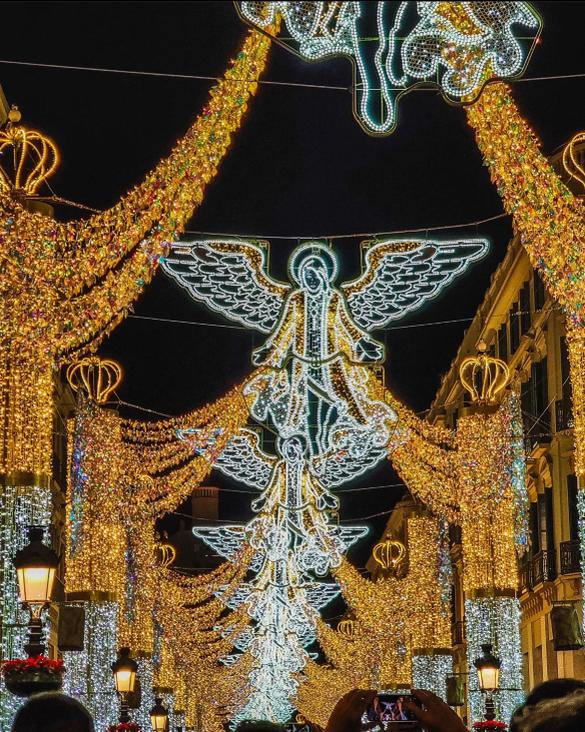
Christmas lights
Who doesn’t love Christmas lights? Especially Malaga’s Christmas lights. Each year the city attracts more people as visitors walk through the historic centre stunned by the setup. The city will feature around 2.2 million LED lights in 500 streets, squares and roundabouts – but the star attraction will be the traditional light and sound show on Calle Larios, the spot that attracts the most visitors and the most selfies per square metre.
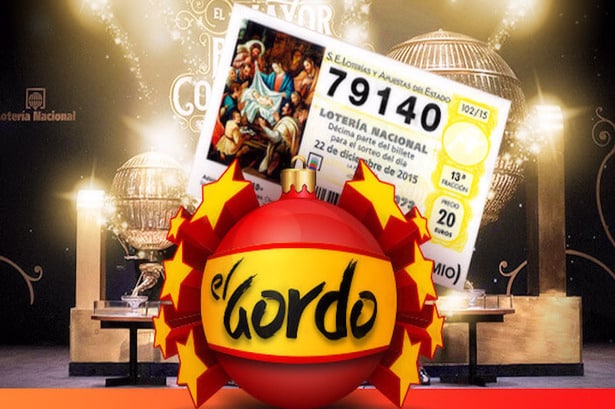
Christmas lottery
El Gordo, is one Spanish Christmas tradition that definitely pricks ears. Its literal translation is, the fat one, and you can understand why. This tradition is more than just a simple lottery, it’s the second longest continuously running lottery in the world with the fattest prize payout worldwide. Each year hundreds of thousands of Spaniards get excited for this moment and their opportunity to fatten their wallets with some extra spending money heading into the new year. Four million euros awaits the winner of each holder of the El Gordo jackpot number this year. The lottery is drawn on December 22.
Christmas cuisine
When it comes to food and drink, the Spanish know how to throw a party. They enjoy their main meal on Christmas eve, not Christmas day. Gifts are also not traditionally given on Christmas day, but on January 6 instead. Spaniards often start their Christmas eve meal with a plate of cured meat, entremeses – think of it as an appetiser with the best Spanish jamón and a selection of local cheese. Pork and lamb is adored all over the country, while suckling pig is very popular in the north and central areas of Spain. You can definitely count on fresh seafood being served, especially in the coastal regions of Galicia and Andalusia.
Roscos de vino – which literally translates as wine rolls – are a common sweet treat, meanwhile, it doesn’t get more typically Christmas than turrón, made from honey, sugar, almonds and egg whites. Crumbly Christmas shortbread biscuits such as mantecados and polvorones are a staple item in the pantry in December.
But no Christmas in Spain is complete without the Roscón de Reyes. This sweet, bread-like cake is shaped like a large doughnut and topped with candied fruit slices and without a doubt one of the most popular Christmas desserts in Spain. It is mainly eaten on 6 January. Somewhere inside the cake are two surprises: a bean and a figurine. Tradition says that whoever finds the figurine will be crowned king, while whoever gets the bean must pay for the cake.
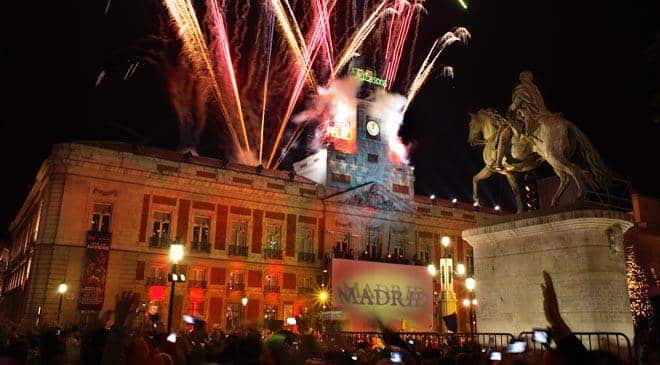
12 lucky grapes
If you found the bean, chances are your good luck came from New Year’s eve, and another popular festive season tradition in Spain: 12 lucky grapes. Spaniards try to eat one grape for every one of the 12 clock chimes that ring in the New Year at midnight. The goal is to finish all 12 grapes before the chimes finish ringing. Sounds simple, but it has caused people to choke in the past. The tradition dates back even earlier, to the 1880s. It is thought to have morphed out of the French tradition of eating grapes and drinking champagne on New Year’s eve, which was mimicked by the Madrid bourgeoisie.
Eventually, members of the lower classes took to eating the grapes as a way of mocking the bourgeoisie, meeting up in public squares like the Puerta del Sol in Madrid where thousands of people go each year to wait next to its historic clock tower.
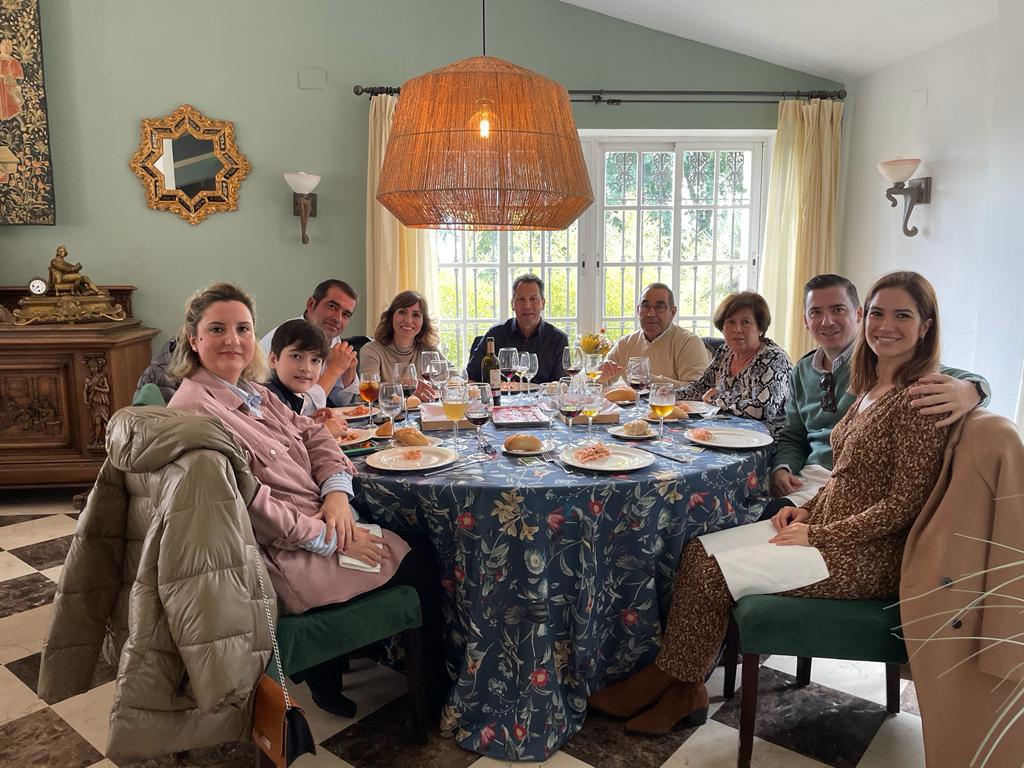
If anyone knows how to celebrate Christmas in Spain, it’s Just Explore CEO and founder, Rosa Lara. December evokes sweet nostalgia of past Christmas’ gone by in Andalusia, and each new season is another chance to add to her wonderful collection of festive memories. “Do as the locals do,” she says.
Christmas in Andalusia
What makes Christmas in Andalusia so special?
It’s a big family gathering, like any other Catholic country but where Spain sets itself apart from others is the passion with which we celebrate. It’s a huge party where we eat, drink wine, spend valuable time with loved ones, socialise and truly enjoy life.
What are some of the Christmas and New Year traditions you grew up with as a child and still continue today?
Definitely the 12 grapes, and I have even taken this tradition with me to other countries and it’s always well-received. For the past 20 years I have celebrated New Year with our very good friends from Bordeaux and now we all do this together – It’s become a must-do at New Year. Another of my favourite traditions is to watch the lottery ticket show on December 22.
What are your recommendations for someone who may be experiencing New Year’s and Christmas in Andalusia for the first time?
Get lost in the magic of the Christmas markets, see the lights, try traditional pastries, watch the Reyes Magos parade, go to the main plaza at midnight and eat the 12 grapes and drink cava – just do like the locals do and you can’t go wrong.
On behalf of Just Explore, feliz navidad y feliz año nuevo! We hope you enjoyed our article about Christmas in Andalusia and Spain!


